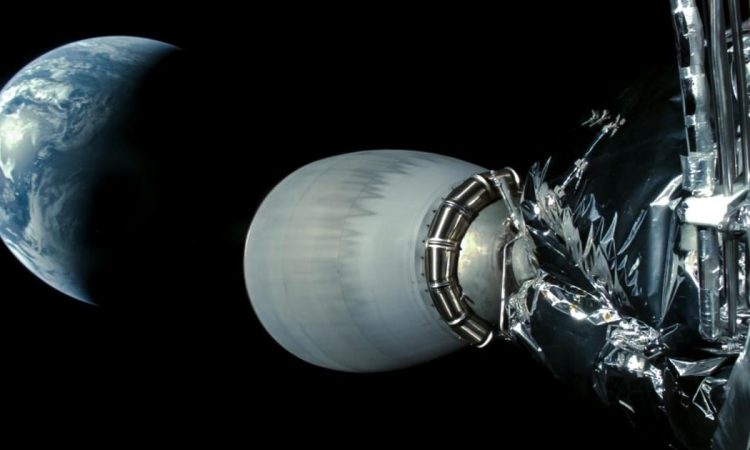
The defense against dangers from space is making progress: the “Hera”-Mission the European Space Agency ESA to deflect asteroids has been successfully launched into space.
The probe is intended to investigate what the probe’s impact “Dart” 2 years ago on the Asteroids Dimorphos has wreaked havoc. The results can help protect the Earth from devastating asteroid impacts in the future.
“Hera,” named after a Greek goddess, lifted aboard one Falcon-9-Rakete by SpaceX from the Kennedy Space Center in Florida. The probe is in Bremen was developed and built by the space company OHB.
➤ Read more:
Reach your goal in 2 years
After about an hour and 20 minutes, the probe separated from the final rocket stage as planned. Shortly afterwards, at 6:12 p.m., ESA was able to first contact with the probe restore.
“Hera” should initially be on Mars fly by and after more than 2 years in December 2026 get to your destination: Dimorphosthe smaller part of a double asteroid. The probe is controlled from the ESA control center in Darmstadt.
➤ Read more:
Cameras, laser and radar cards
The probe has various features Cameras as well as laser and radar-based measurement systems. “Hera” is intended to provide answers to what the approximately 150-meter-long asteroid Dimorphos now looks like. And how much he was thrown off course – because with a similar one collision An asteroid heading toward Earth could also potentially be deflected.
NASA Probe Crashes into Asteroids
The probe landed 2 years ago “Dart” the US space agency NASA a direct hit on the asteroid. Clear is loud NASA: The asteroid was changed as a result, including its orbit around the larger asteroid Didymos became another. Material was also thrown out.
But so far it is unclear: how deep it is crater? Or did the asteroid even become complete deformed? How heavy is he? And it only consists of rubble or rather a solid core surrounded by a layer of boulders? “Hera” should show all of this when she is around her 195 million kilometers arrives at a distant destination.
➤ Read more:
Land on the asteroid
First, “Hera” will look at the asteroid from a distance. Then the daughter probes should “The youth” and “Milani“even one more daring maneuver connect: land on Dimorphos. Since the attraction of the boulder is very weak, it is expected that “Milani” will jump away several times.
ESA boss Aschbacher considers “Hera” to be “a very important mission”. This is a first concrete step to defend the planet against asteroids. Be it the first timethat humanity was investigating an asteroid that was hit by another man-made object.
➤ Read more:
Next asteroid mission already planned
“Hera” was designed and built in just 4 years. The probe should also become a model for “Ramses” (“Rapid Apophis Mission for Space Safety”). This probe could be in 2029 Asteroids Apophis as it flies past Earth.
According to ESA, the chunk with a diameter of around 375 meters will next fly past Earth on April 13, 2029 – at a distance of just 32,000 kilometers. For comparison: the moon is on average 384,400 kilometers away, more than 10 times as far.

